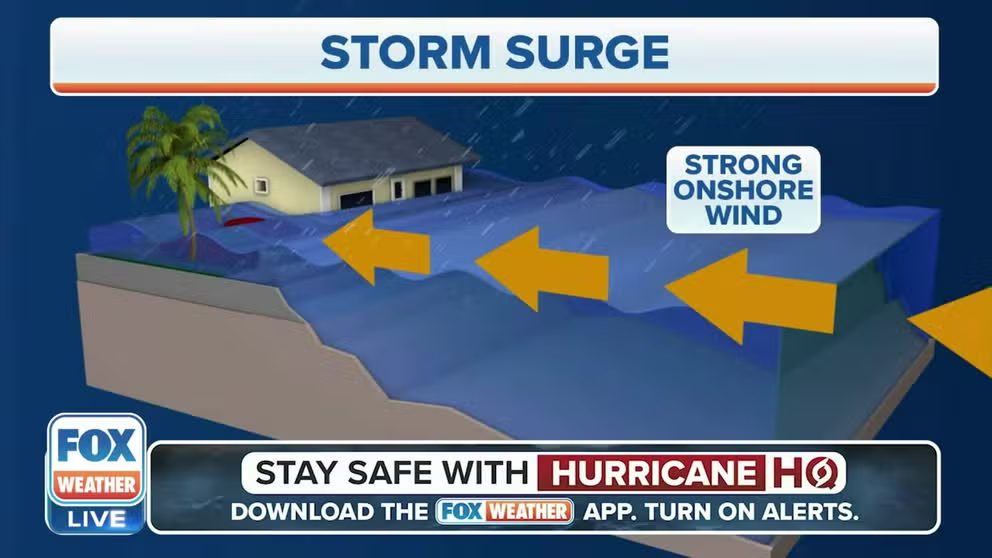What is storm surge?
Storm surge is often responsible for the greatest loss of life an property during a hurricane, according to the NHC.
How high can storm surge get?
FOX Weather Hurricane Specialist Bryan Norcross explains what storm surge is and how high it can get.
As hurricanes churn over the ocean, the powerful winds actually push water to pile up on the coast. NOAA defines storm surge as the abnormal rise of water generated by a storm, over and above the predicted astronomical tide. The tide and storm surge together can reach up to 20 feet, according to the National Hurricane Center.
"When the hurricane hits the coast, that moving mass of elevated water is pushed over the shoreline," explained Hurricane Specialist Bryan Norcross. "That's what we call storm surge. It's measured by how deep the water gets."
Winds rotate counter-clockwise around a hurricane, so the right front quadrant of the storm blows the winds to shore. The right side of a hurricane is generally more dangerous because we add the forward speed of the storm and steering currents to wind speed.
HERE ARE THE BUZZWORDS YOU'LL BE HEARING DURING HURRICANE SEASON
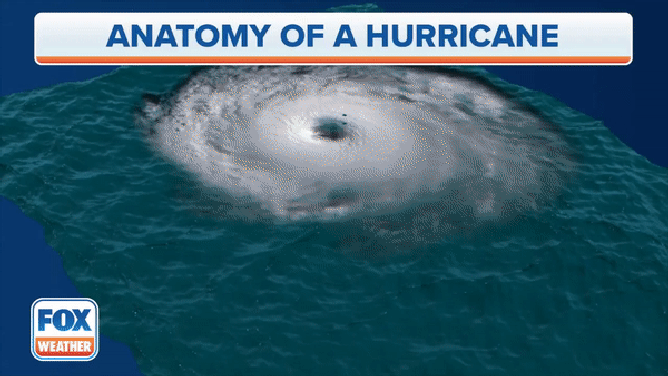
An animation showing the anatomy of a hurricane.
(FOX Weather)
The winds create a deep current in the open ocean. But when it hits the coast, the water has nowhere to go but up.
"The analogy that I'm going to use to describe what the inundation would look like is to think about when you're having a really hot bowl of soup," said Meteorologist Michael Estime. "You get your spoon, and what do you do when you scoop out your first little teaspoon of soup? You blow on it, right. And what happens? That soup begins to shift. That's exactly what's going to go on right here."
Instead of a gentle blow across a spoon, those winds blow between 39 and 73 mph with a tropical storm and a hurricane blows above 73 mph.
KNOW YOUR ZONE: FLORIDA EVACUATION MAP SHOWS WHO WILL HAVE TO LEAVE BEFORE A HURRICANE STRIKES
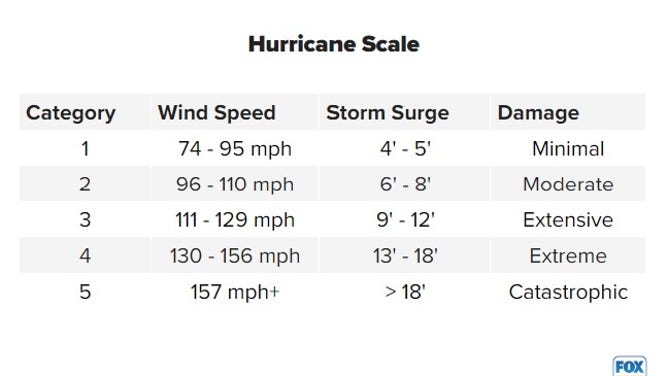
In general these are the storm surges that can be generated by different Category hurricanes.
(National Hurricane Center / NOAA)
"Along the coast, storm surge is often the greatest threat to life and property from a hurricane. In the past, large death tolls have resulted from the rise of the ocean associated with many of the major hurricanes that have made landfall," stated the NHC. "Hurricane Katrina (2005) is a prime example of the damage and devastation that can be caused by surge. At least 1500 persons lost their lives during Katrina, and many of those deaths occurred directly, or indirectly, as a result of storm surge."
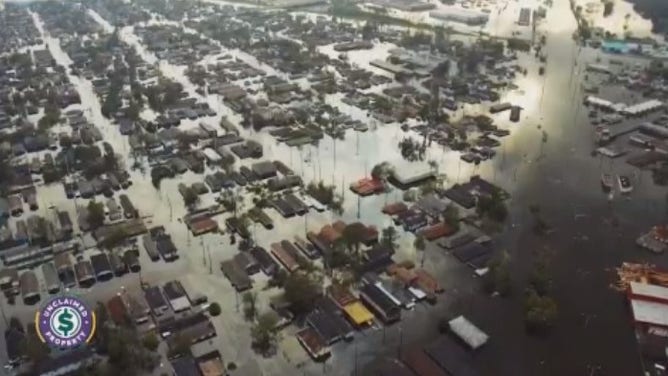
FILE: Hurricane Katrina's storm surge swamped New Orleans then levee and pump failures compounded the flooding.
(Louisiana Treasury / FOX Weather)
A study found that storm surge was the leading cause of direct deaths from storms between 1953 and 2012. Another study from 2013 to 2022 found most deaths during hurricanes were caused by rainfall flooding.
The amount of storm surge a coast sees depends on the wind speed, forward speed, the angle of the storm to the coast, the size of the storm, the pressure and coastal features like bays/estuaries and the profile of the continental shelf.
"A shallow slope will potentially produce a greater storm surge than a steep shelf," wrote the NHC. "For example, a Category 4 storm hitting the Louisiana coastline, which has a very wide and shallow continental shelf, may produce a 20-foot storm surge, while the same hurricane in a place like Miami Beach, Florida, where the continental shelf drops off very quickly, might see an 8 or 9-foot surge."
A pressure-driven surge adds about 5% to the wind-driven surge.
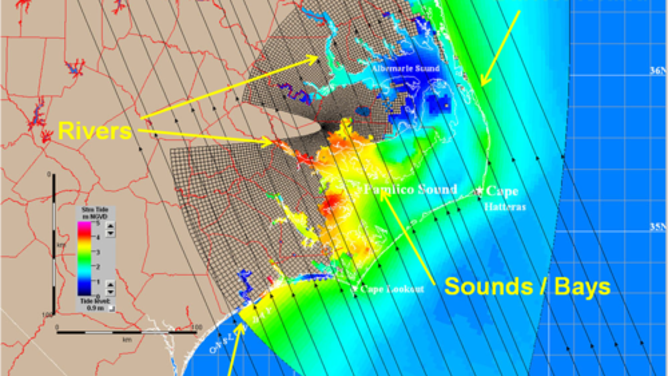
NOAA's Sea, Lake and Overland Surges from Hurricanes (SLOSH) model shows how sounds, bays, marinas and rivers are particularly susceptible to deeper storm surge.
(NOAA)
Waves ride atop the surge, ushering the pounding force further inland. Water weighs about 1,700 pounds per cubic yard. Even homes built to withstand hurricanes won't be a match.
The rushing water also creates currents as it rushes in and out. Those currents erode the foundations of buildings and roadways and eat away at beaches. The NHC reminds us that even buildings that survive the hurricanes can be undermined.
The NHC developed a tool that shows coastlines and potential depths of storm surges for different category hurricanes. The image below is data for a Category 3 hurricane. You can find the actual tool here.
WHY FLORIDA'S GULF COAST IS SUSCEPTIBLE TO A HURRICANE'S STORM SURGE
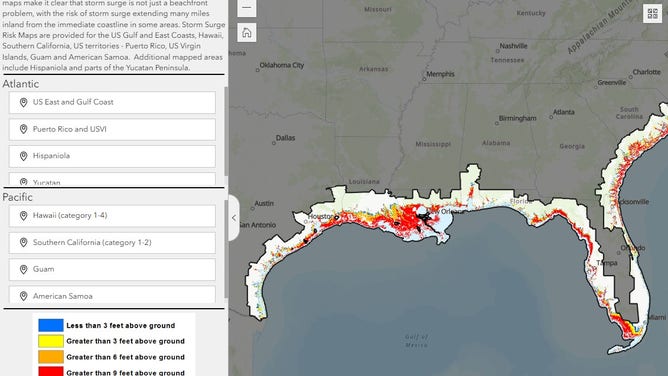
The NHC's depiction of storm surge variability.
(National Hurricane Center / NOAA)
The NHC found that Fort Myers Beach, Florida, saw peak storm surge levels of 10 to 15 feet above ground level during Hurricane Ian. Storm surge destroyed about 90% of the barrier island.
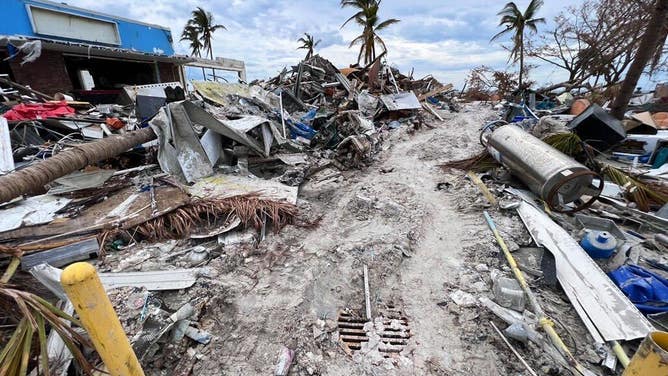
FILE: Debris from Hurricane Ian in Fort Myers Beach more than two weeks after the storm brought deadly storm surge to the Lee County, Florida community. (Image: Robert Ray/FOX Weather)
(FOX Weather)
Watch FOX Weather, your Hurricane Headquarters for storm surge forecasts.
